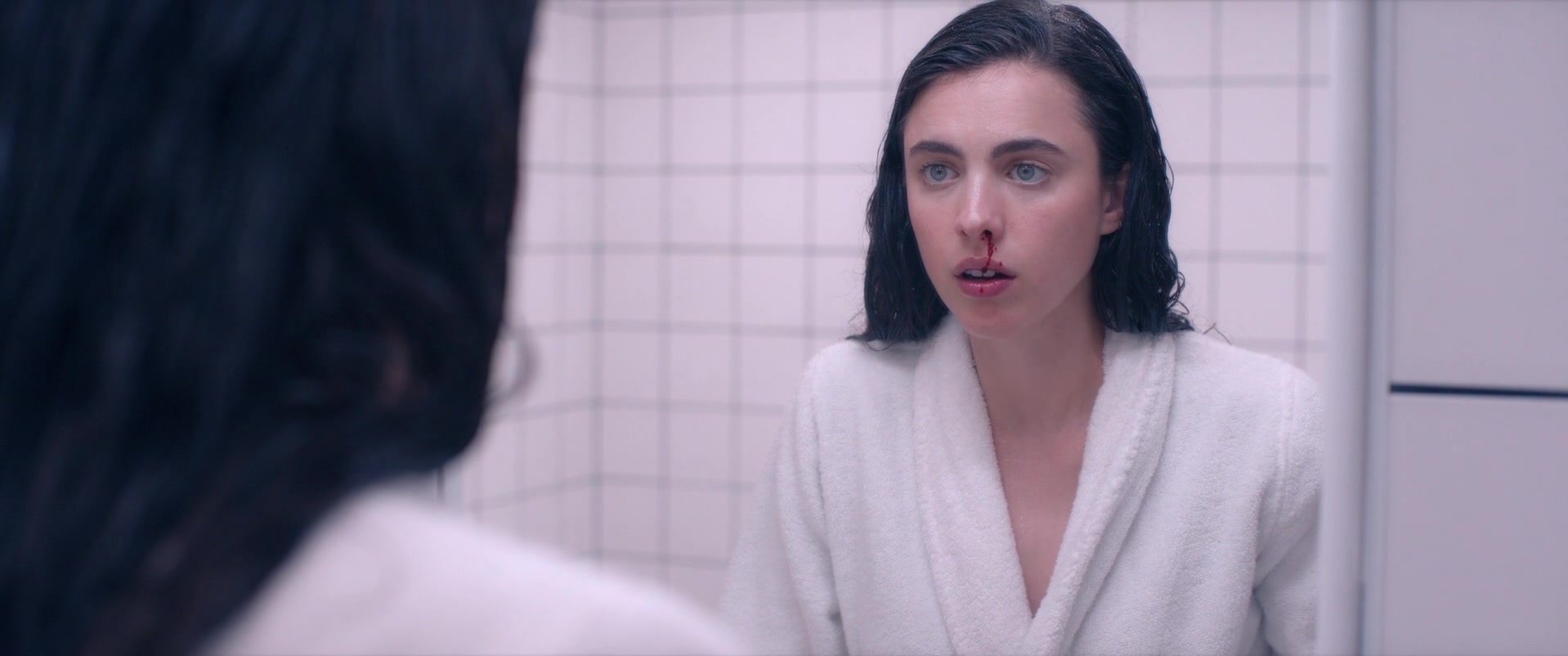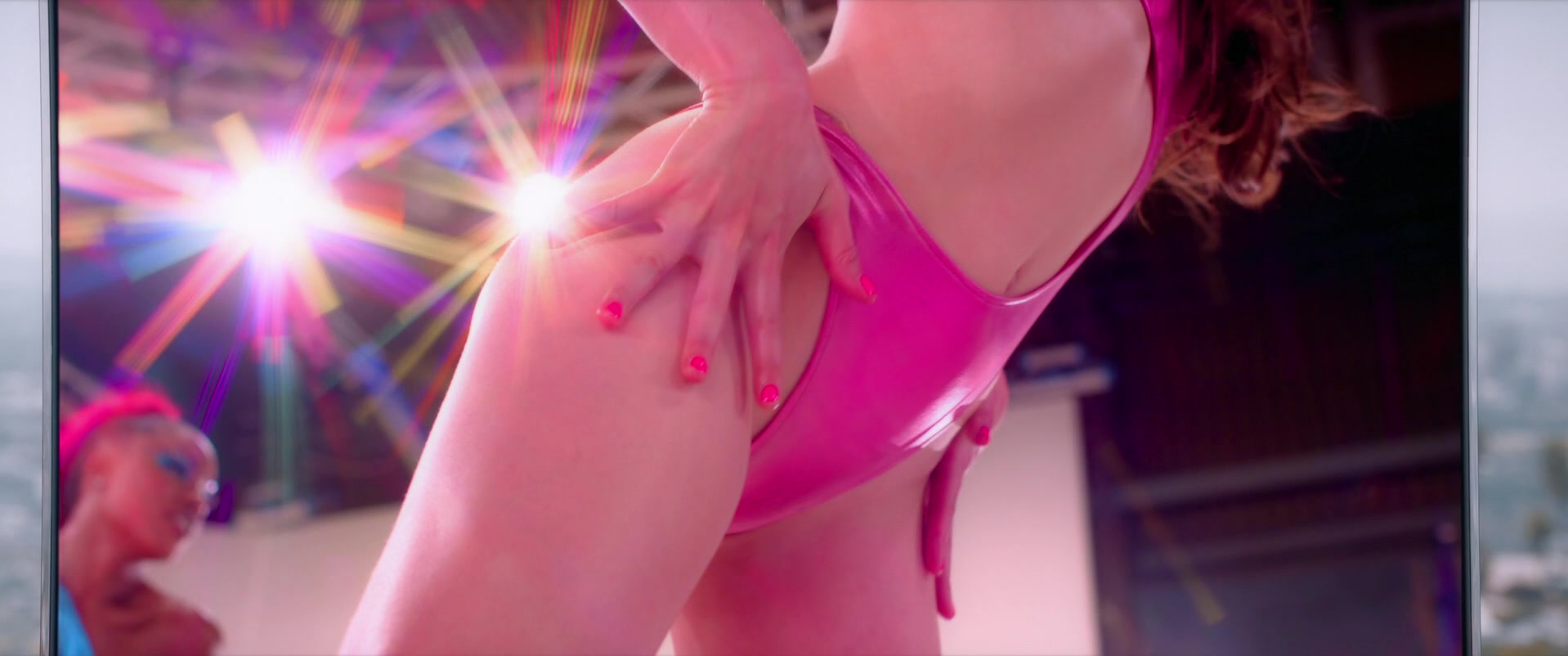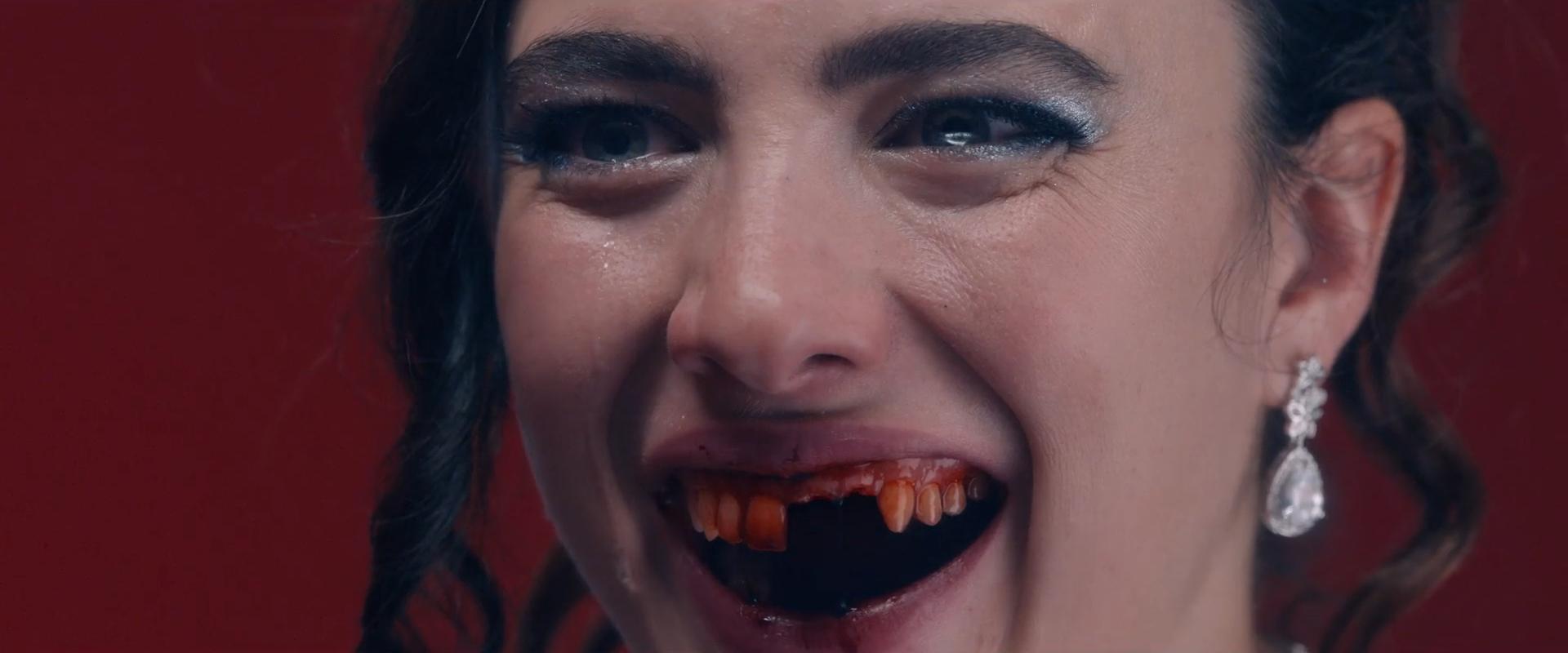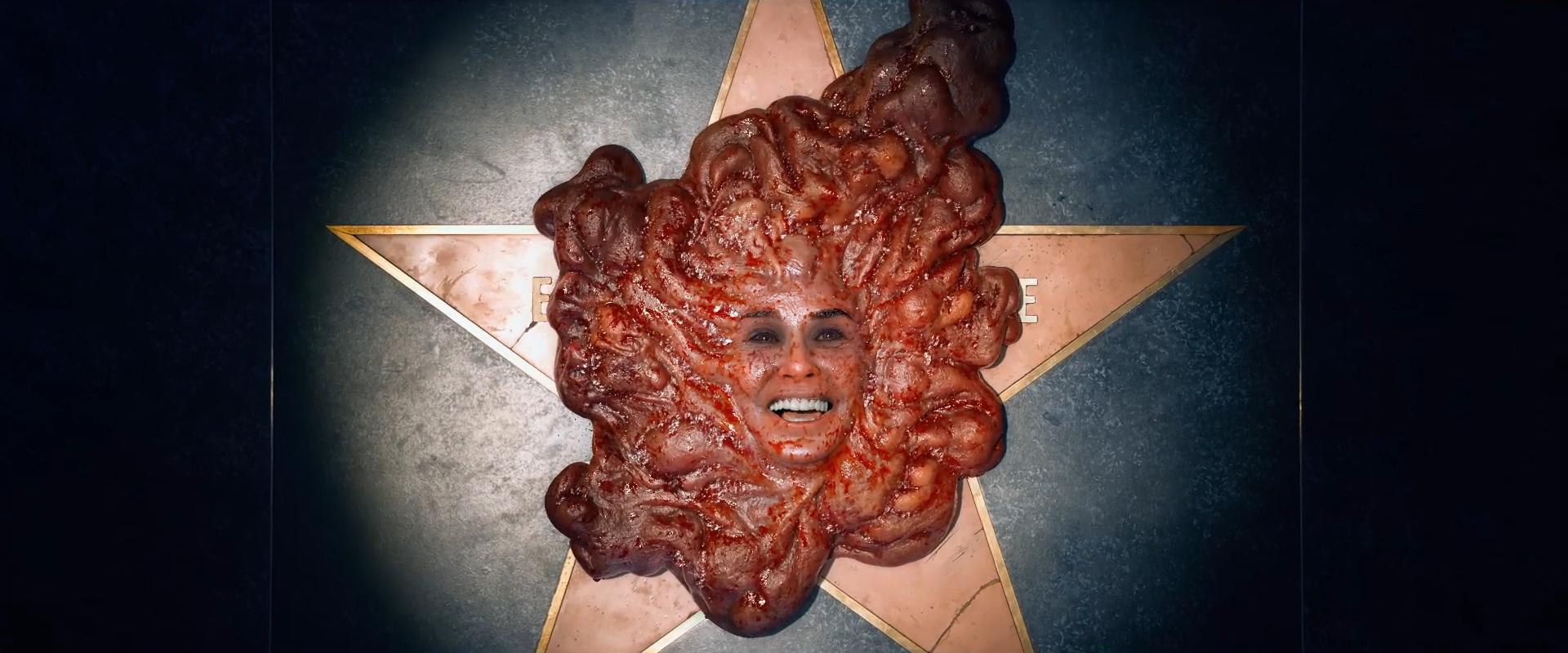‘The Substance’ and the Violent Cost of Vanity

WARNING: The following contains major spoilers for The Substance.
In 2015, Inside Amy Schumer aired a sketch called “Last Fuckable Day“, in which the titular comedian stumbles upon an unusual celebration. At a pleasant picnic table, Tina Fey and Patricia Arquette toast Julia Louis-Dreyfus and the arrival of her last fuckable day in Hollywood. Louis-Dreyfus explains, “In every actress’s life, the media decides when you’ve finally reached the point where you’re not believably fuckable anymore.” Men, of course, have no such day though they are largely responsible for pinpointing the transition for women.
Louis-Dreyfus expresses relief at passing this strange milestone, but director Coralie Fargeat treats the concept with deadly seriousness. Her film The Substance is an outlandish body horror nightmare that explores the fear of aging in grisly detail while injecting violence into the resentment and female rivalry that stems from a dehumanizing system. Battling for control of a single body, two women tear each other apart in a desperate attempt to hold onto the illusion of youthful perfection.
Her Story
Elisabeth Sparkle (Demi Moore) once had it all. We meet this gorgeous actress at the dedication of her star on the Hollywood Walk of Fame then watch as the monument crumbles with age. Years later, the glitz and glamor have begun to fade. On her 50th birthday, Elisabeth overhears producer Harvey (Dennis Quaid) referring to her as “the old bitch” and demanding a younger woman to replace her as host of her namesake morning fitness show. She’s devastated to realize that her last fuckable day has come and gone. When a young and strikingly beautiful stranger slips her information about the Substance—a miracle cure for aging—she takes the plunge despite the company’s shady appearance. Elisabeth injects the Activator serum and then convulses on her bathroom floor as her body splits open to birth her other self, a gorgeous young woman who will call herself Sue (Margaret Qualley).
After marveling at her perfect body, Sue wastes no time stepping into Elisabeth’s limelight. She’s cast to lead the morning show and becomes the new face of the fitness network. But the Substance’s instructions are clear: Sue and Elisabeth must switch places every seven days without exception. While one lies motionless on the bathroom floor, the other takes control of the body’s finite resources. With her star on the rise, Sue begins to extend this time limit, staying just a little bit longer with each passing week.
Unfortunately, Elisabeth pays a steep price for Sue’s indulgence. Each time her other self takes more than her share, Elisabeth returns to a dramatically older body. After one three-month time binge, Elisabeth awakens a twisted hag. Her hair has fallen out, her skin sags in deep wrinkles, and her gnarled and misshapen limbs barely support her hideous body. Horrified, she tries to terminate the experience by killing Sue, but changes her mind just a moment too late. Reanimated, Sue responds by savagely beating Elisabeth to death, cutting off access to the spinal fluid she needs for daily stabilization. Set to host the network’s high-profile New Year’s Eve show, Sue must turn to the Substance herself, spawning a monstrous remix of both women’s bodies.
Her Victim

When Elisabeth first contemplates taking the Substance, the mysterious operator is very clear. She and Sue will be one and the same. They may feel like different entities, but each stems from the matrix of Elisabeth’s body. Unfortunately, they do not share a consciousness and have no idea what the other is doing with her allotted time, save for what they can piece together from clues left behind in the luxurious apartment.
As each woman ventures down drastically different paths, resentment begins to build. Sue is disgusted by what she views as Elisabeth’s slovenly lifestyle and horrified that she would spend her allotted week hunched over food while watching TV. The older self begins to resent Sue’s quick rise to fame, especially when she publicly denigrates her predecessor’s show. Elisabeth expected to recapture her youth and beauty, but she has only succeeded in birthing a competitor who constantly drains her life away.
Despite their conflicting ambitions, these women are intimately connected. While filming an aerobics routine, Sue notices a strange bulge on her buttock and pulls a rotisserie chicken wing out of her naval—a remnant from one of Elisabeth’s binges. She resents the limitation of having to switch back and that she is beholden to the other woman for life-giving fluid. But the effect Sue has on Elisabeth’s body is nothing short of horrific.
Each time she overstays her welcome, Elisabeth wakes up in worse condition. The younger girl is literally bleeding her dry by pulling the valuable formula out of her spine and causing her body to break itself down. Like most people in the prime of their life, Sue has no qualms about exerting her power. She believes she deserves Elisabeth’s time and prefers to keep her older self hidden away. Fighting for limited time, the two women become both victims and villains to themselves.
Her Weapon

The moment Elisabeth injects the Activator, her body no longer belongs solely to her. Sue bursts forth from her back and leaves Elisabeth lying naked on the floor. Helpless, she needs Sue to sew up her skin and administer the food matrix that will keep her alive until it’s time to switch back.
But after this initial bout of care, Sue’s body becomes a threat to Elisabeth. Not only does each switch cause rapid aging, but Sue is a living representation of everything Elisabeth has lost. Hoping to cheer herself up, she contacts an old friend from high school and plans a date. But as she prepares to walk out the door, Elisabeth catches a glimpse of Sue on a billboard outside her picture window and immediately questions her own appearance. Unable to replicate Sue’s youthful beauty, she stands the man up and essentially retreats from the world.
But this weapon cuts both ways and Sue finds that she cannot escape her other self. As the body matrix, Elisabeth has the sole ability to regenerate the stabilizing fluid Sue needs. Without injecting it, she will bleed and fall apart. While Elisabeth can pull the plug while in control, Sue is reliant on Elisabeth’s body for her own survival. She must switch whether she likes it or not.
Horrified by what Sue has done to her body, Elisabeth decides to end the experience. She plunges the terminating substance into Sue’s heart, but immediately regrets her decision. Her own body cannot be repaired and without Sue, she has nothing left. Elisabeth desperately brings Sue back to life, but the damage has already been done. Enraged that her older self would try to regain control and likely disgusted by what she sees, Sue slams Elisabeth’s withered face into the mirror and kicks her to death in a pile of shattered glass. It’s only later that she realizes just what she’s done. Sue is now completely on her own with no way to renew her impossible beauty.
As she prepares for the biggest night of her burgeoning career, Sue begins to feel this destabilization. Staring at herself in horror, she pulls out three of her front teeth, ruining the perfect smile Harvey demands. With her body literally falling apart, she dashes to Elisabeth’s bathroom and finds the nearly empty vial of Activator fluid. Sue desperately repeats the procedure, hoping to recreate the perfection of her own ruined body. But the vial was not meant to be used a second time and what burst from her back is a horrifying version of both Sue and Elisabeth.
Monstro Elisasue is a fleshy jumble of barely recognizable body parts lumped together in a vaguely humanoid form. Elisabeth’s face screams from the creature’s back, while remnants of Sue desperately try to mask each deformity. This is where their bloody battle has led, a horrific monster trying in vain to cover up the results of narcissistic desperation.
Her Motive

Elisabeth’s motive is one of the oldest in the world. Rooted in vanity, she has been taught to view her worth as intrinsically linked to her beauty. And as her looks fade, she realizes that she has nothing else. It’s notable that Elisabeth’s entire life revolves around her physical appearance. Her apartment has been decorated only with a massive portrait of herself and she doesn’t seem to have any friends.
The Substance does not pass the Bechdel test and we never see Elisabeth speak to another female character let alone the younger version of herself. Both women yell at their counterparts lying helpless on the floor, but their only engagement is this deadly fight. When she loses her job, Elisabeth has nothing to do but sit alone each day and obsess over the ruination of her life. She is essentially a body without a soul and creates another vain woman to follow in her footsteps.
At first, Sue seems to have an admirable drive to succeed in a tough industry. She’s determined to make the best of what she has and enjoy her extravagant life to the fullest. But she soon begins to feel Elisabeth’s pain. After her grisly birth, Sue luxuriates in the mirror and marvels at her perfect body before setting out to build her career. And while initially pleasing to Harvey and the company’s backers, she soon experiences the objectification that eventually wore Elisabeth down. When the chicken wing appears as a lump on her body, the entire crew stares at her rear on a giant screen, scrutinizing each frame for the slightest imperfection. Sue has begun to lose control of her body—the only asset she has.
Perhaps Sue now realizes that Elisabeth was once in her shoes, a young ingénue ripping the spotlight from another aging star. We’re left to wonder whether Sue understands that she is not the first and will certainly not be the last young woman to crumble under the weight of this dehumanizing world.
With Elisabeth dead, Sue has nothing left to sustain her body and injects what’s left of the Activator serum. Like her older self, the beautiful woman becomes a discarded husk on the bathroom floor. The emerging Monstro Elisasue hastily reshapes her glamorous party dress and pastes a scrap of Sue’s portrait over her face to mask features that are far from “in the right place.” Like Frankenstein’s Monster, hers is the most relatable motive of all: Monstro Elisasue simply wants to be accepted regardless of her body’s shape.
On stage, she begs the audience, “Don’t be scared! It’s still me!” and insists, “I’m Elisabeth! I’m Sue!” reminding them that nothing has changed but her outward appearance. But the shocked crowd screams in terror and tries to destroy the “monster” they see standing before them. Monstro Elisasue eventually crawls her way back to Elisabeth’s Hollywood star and crumbles into dust while screaming at the sky.
Her Legacy

Fargeat’s bloody conclusion pushes her metaphor to the absolute limits—destroying both women in a doomed quest for perfection. But what of those watching from the audience? The first one to break the horrified spell is a beautiful young woman dressed to the nines. Like Sue viewing Elisabeth, she’s horrified at this depiction of monstrosity and turns her back on a woman desperate for help. Another onlooker holds her sobbing child in her lap as blood rains down on the auditorium. Dressed in imitation of her idol, this little girl represents a still younger generation who will grow up to equate advancing age with monstrosity.
But the true villain of The Substance is Harvey and the toxic system he represents. His judgment has destroyed both Sue and Elisabeth by convincing them of two insidious beliefs: their worth rests solely on the possession of youthful beauty and there is only room in the spotlight for one. Elisabeth must fall for Sue to rise.
The tragedy of Elisabeth’s life is that she has put too much stock in Harvey’s opinion and conflated his judgment with the rest of the world. Elisabeth seems perfectly happy until she overhears his cruel comments—dehumanizing words from a disgusting man allowed to age as he pleases. From that moment on, her days are dominated by a destructive quest for physical perfection. She cannot see her intrinsic worth and begins to view her own body with disgust and disdain before turning her rage on her younger self. An early scene in The Substance shows Harvey dipping shredded prawns all over a nasty plate, actions Elisabeth mirrors while messily cooking to cope with Sue’s insulting interview. The older woman’s insecurity has turned her into the very monster she’s destroyed herself to please.
The Substance becomes a blunt reminder that we each have only one body destined to age no matter what we do. Body grieving is a practice of acceptance meant to divorce ourselves from the idea that our evolving appearance is tied to a moral failing. The truth is that we have very little control over how our physical form adjusts to external factors and any attempt to override nature usually leads to long-term damage or emotional pain. Like Sue and Elisabeth, we can only tear ourselves apart by clinging to time that will inevitably pass. It’s only by focusing on who we are inside that we can build a legacy strong enough to stand the test of time.
User Review
( votes)Categorized:News

